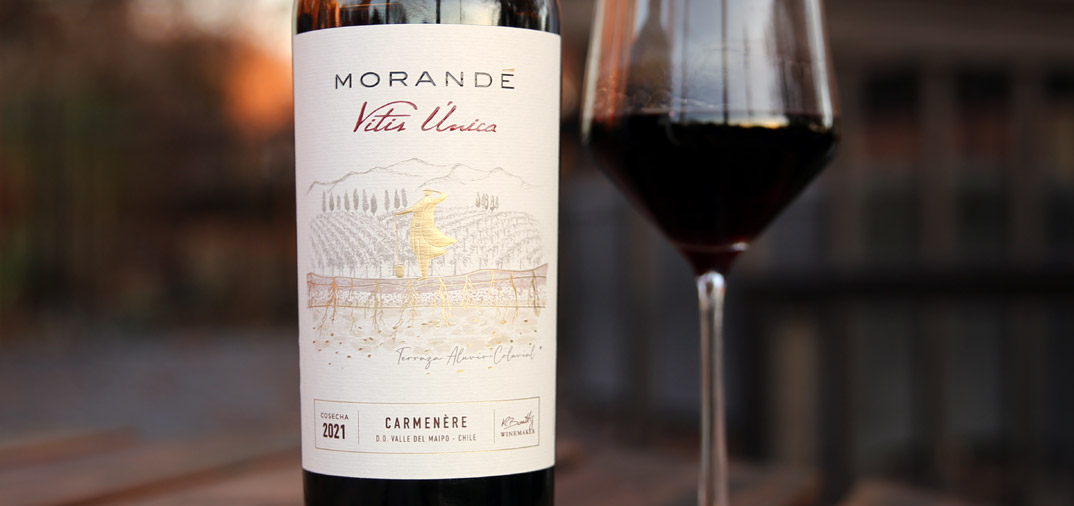 4.5
4.5 Review: Morandé, Vitis Unica Carménère
I’ve recently been doing a short series on Carménère, highlighting the new styles winemakers are producing from this once thought to be lost grape. It was once one of the grapes used to produce Bordeaux until 1867, when a pest called phylloxera destroyed most of the vineyards in Europe and completely decimated Carménère vineyards there. Over a century later it was discovered that Carménère still existed in Chile and it has since become one of the signature grapes of Chile.
One of the features of this grape variety is a chemical compound called pyrazines. This compound creates what are often referred to as “green” aromas when made into wine. In Carménère these aromas often resemble green peppers or chili peppers, but can have other expressions as well. During the early resurgence of Carménère in Chile, winemakers would try to hide the pyrazines but more recently they’ve embraced them, resulting in new styles of Carménère that are more terroir-centric, expressing the unique characteristics of the grape based on the soils and climate where it’s grown.
The first wine I included in this series, Luma Chequén Gran Reserva Carménère, came from two different vineyards in the coastal mountain range of Maule Valley — one of those vineyards in a cool climate region and another in a slightly warmer region. Growing grapes in two different vineyards gave those winemakers flexibility to blend the characteristics from each vineyard.
The second wine I reviewed was, In Situ Reserva Carménère, which comes from a high altitude vineyard in the Aconcagua wine region, in the foothills to the Andes mountain range. This one is from an area with a significant diurnal shift (i.e., warm daytime and cool nighttime temperatures), which results in good ripening and acidity.
Morandé, Vitis Unica Carménère
The wine I’m reviewing today, Morandé, Vitis Unica Carménère, is from the Maipo Valley region, just south of Santiago City, near the Maipo River. This is an inland region with a temperate Mediterranean climate. One of the unique features of the terroir where the grapes for this wine are grown is a rocky and sandy soil, which is like pebbles. The conditions here help create a ripe, well-balanced and dynamic wine that is more elegant than bold.

Tasting Notes
Spices are the most prominent feature on the nose of this wine, offering fragrances like cinnamon, black licorice, black pepper, allspice and cedar. That’s not to say there isn’t fruit on the nose as well, mostly blueberry, blackberry and cherry aromas. The fruit really comes to life on the palate though, delivering ripe blackberry, cherry and blueberry flavors with plenty of spice, such as chocolate, black pepper and earthy mushrooms. The acidity is nice and bright. The mouthfeel is silky smooth. It finishes long, with berry and spice flavors.
Wine: Morandé, Vitis Unica Carménère
Varieties: 100% Carménère
Vintage: 2021
Alcohol: 13.5%
Rating: 90
Average price: $20
Disclosure: This wine was received as a media sample.










